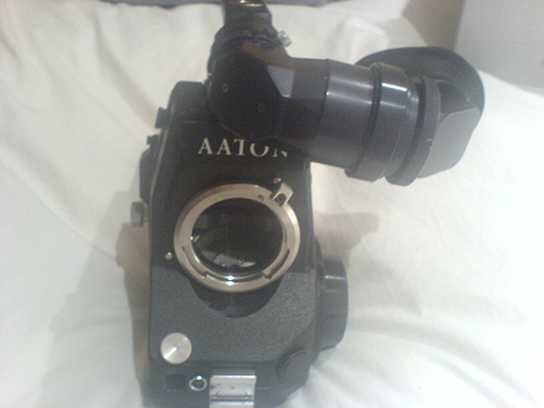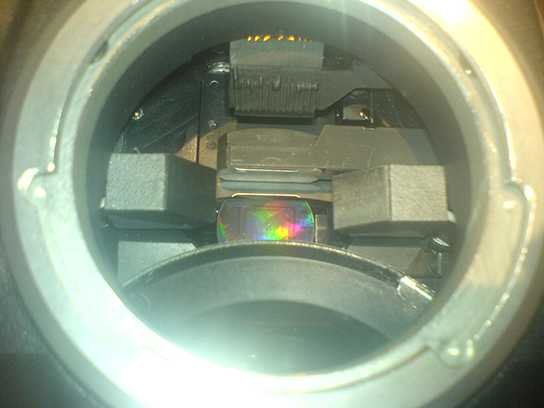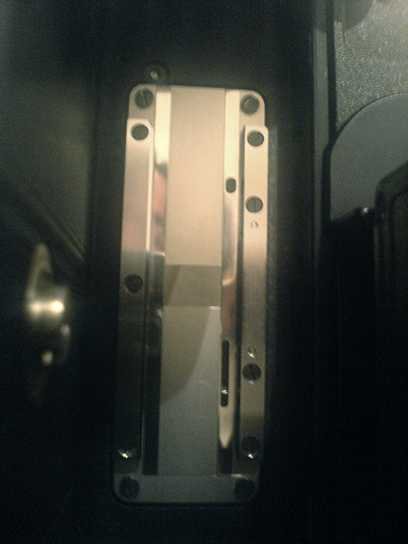
diego vazquez
Basic Member-
Posts
17 -
Joined
-
Last visited
About diego vazquez
- Birthday 09/01/1985
Profile Information
-
Occupation
Director
-
Location
LONDON
Contact Methods
-
Website URL
http://
-
i thought that 500D didnt exist. does it? where??
-
is the aaton mount the same as the arri bayonet mount?? cus on the inventory list of the aaton ltr it reads aaton/arri mount.
-
3 things. first.- if you shoot in video you will not be making a FILM as simple as that, you can go do it and go sell it to a tv channel, if money is what you wanna make, (it sounds that if you wanna make it cheap, but make it look expensive with some digital filters that dont exist, you wanna make some money) if you really really were passionate enough about FILMmaking you would be using minidv to do video storyboards and plan as carefully as you can your project so you make as few as possible mistakes while shooting the real thing. you would see minidv as a rehearsal tool. if the business people behind the red cam were really passionate about film they would use the red cam technology to make a proper video tap (video assist) for film cameras. that is a real combination of the best two forces. but of course these people arent passionate about film, that's why they created these digital cameras, cus they are passionate about money. *that on its own puts me off shooting on video. i'd rather use video to plan how to shoot on film. second.- if you are interested in filmaking. then you need the discipline that filmaking needs, the culture off not seeing what you get straight away, in that way you will be sharper,(so in case you do want to make money out of filmaking, by being sharp and good both creatively and technically you will be worth some money as a director) and you will only be sharp at filmaking by practicing "FILM"making. the only way to learn how to make a film is by making a film. you should thank that filmaking is not as hard as heart surgery where you need 10 years min of studying. in film you can just go make your FILM and learn how its done, and you decide how much information you want to take in as technique. and third. i mean please dont tell me that it is hard to find some budget to shoot on super 16mm and rent some at least 1k lights, and some kinflos, a dat recorder. i mean you can save up, or get credit card, loan, work for it, by doing whatever it is that you do. i garantee you that getting funding for your film is not as hard as hunting a grizzly bear with your bare hands.
-
so we're gonna shoot a project that has a bit of budget and this time we can afford to rent some cooke primes that cover super 16, and we own the camera which is an aaton ltr but it has aaton mount. i heard negative things about buying an aaton to PL mount adapter, someone mentioned, having to remove the whole aaton mount and replace it with a PL. but i cant seem to find anything about this. also i keep reading about the aaton mount keeping an accurate distance between aaton mount lenses and the filmback. has anyone shot with an aaton ltr and cooke primes (or PL mount)? any thoughts?? thanks in advance...
-
hello there. i was wondering about this whole aaton ltr super 16 magazines issue. so i have two magazines and they both have the take up part facing left so the film bends a bit, i heard that after t grain came out on 16mm stock aaton changed their mags by turning the take up part. so the film comes out with out bending too much, they told me that my one causes bruising on the film (t grain stock) and that i need the new mags. we've shot 4x 400 ft rolls to test all aspects of the camera, and so far no bruising, should i still look into getting the "super 16" mags??? thanks in advance...
-
Shooting sync with Arri 16BL and recording audio to P2 card?
diego vazquez replied to Tim O'Connor's topic in 16mm
hi the frame rate/running speed of the HVX shouldn't matter really cus the sound is recorded at samples per second, so doesnt matter if the HVX runs at 23.97fps, or 30 fps, or 25 fps. either way 10 seconds of audio will be 10 seconds of audio.. i made a shortfilm with a bolex ebm, with no crystal sync unit, and recorded my audio on a sony ntsc minidv (actually runs at 29.97) the sound was just for guide to later do adr (due to the noisy bolex) but it was perfectly in sync, eventhough my camera wasn't crystal sync!!! the secret was capturing the sound from my minidv tape as audio using Mbox (pro tools) using the normal RCA audio output from the camera, instead of capturing the audio with FCP using firewire which will make the sound be related to its embedded video running at (in your case 23.97)... just really to say that i've done it and it works fine its just my camera was 32 000 khz, if your one is 48 000 you're laughing cus you'll have more dynamic range.... -
hi Nathan so, here are the pictures... i tried my best but i only had my phone to take them, so forgive me about the quality. so i think it wouldn't be too bad converting it, i think it should be just getting the S16 gate, and a 1.66 marked ground glass, i think my favourite one is the one that only has the 1.66 border and the cross hair. no 4:3 safeties at all. does this have hope at all? fingers crossed!!
-
thanks for replying Nathan, i will take a picture tonight when i get back home of the gate, and the ground glass.. sorry i did mean gate, and i definately have a standard 16 gate beacause the two chrome raised portions are the same width, also i placed some gash film against the gate and the chrome bit on the left is definately cropping as if there were perforations or soundtrack, and the ratio of the gate just by eye, defianetely looks more like a 4:3 frame, not to mention, that when i first got the camera we shot some tests, and in the telecine session, the extra (S16) region on the neg was unexposed. thank you again for your reply, and i'll post the pictures as soon as i get home. is there any second hand super 16 gates for sale? a brand new one sounds expensive,
-
so i read all about how to convert an aaton to super 16mm, i happen to have an ltr model C731, and its standard 16 at the moment, before i send it off to get converted, i wanna make sure its can actually get converted as easy as it sounds, so i think i got it clear , to get it converted the following needs to be done to it: 1.-shift the viewfinder by swaping the spacer to the side of the battery (currently on the side of the motor) 2.-swaping the viewing screen to one that shows me the whole 1.66 frame (also shift it to super 16 mode by loosening the screw that keeps the groundglass in place and then rescrew it after its been shifted) 3.- centering the lens mount 4.- (now this one i actually havent read it but its pretty obvious) i need a super 16 aperture plate, right? so... the problem i found is that my camera has the spacer for the view finder and the swapable lock on the lens mount, but IT DOESNT HAVE THIS FAMOUS SCREW NEXT TO THE GROUND GLASS, i saw pictures of another ltr that has a lower model number than mine and that one has it, you can see it through the lens port. so the question... is mine one convertible to super16 then? should i bother shipping it to get converted? also howcome there doesnt seem to be anyone selling super 16 aperture plates? is there extremely low demand????
-
thank you so much david, i'm definately going for the HD SR route. as in tranferring ALL my rushes to HD it hink its worth it cus in that way i only touch the neg once and thats it, i think that is worth not having to be nervous about further risks with the OCN. and when they print to 35mm from HD CAM SR i dont need to worry about any LUT's right? its their job to match the print to how the tape looked right??
-
hello, so i have a question to whoever has gone through the different D.I pipelines... we're shooting a very independent film (on super16mm) and myself and my friend the DOP both work at a post production company where we have direct access to the equipment on dead hours and weekends of course. this meaning that we have the option of when we finish shooting the film and have it developed, we can go any route we like.... the question is which one is more conveinient for someone like me who's going to edit from home in fcp.. route "A" i was thinking could be the following: instead of doing bad onelights to beta sp's or minidv's, i thought i could do best lights to [HD CAM SR at 4:4:4 at 24fps] of ALL my rushes, this meaning i transfer from the film lifting the blacks and bringing down the hilights on a (lighting setup per lighting setup basis) just to grab enough from the film's latitude and put it into the 10 bit tape. after this is done, i can capture ALL my rushes from the HD tape at 24fps, but this time only at 8 bit and 4:2:2 literally just to downres them to compressed quicktimes at a quarter of the resolution and keeping the timecode.. in this way i can go ahead and edit in final cut pro at 24fps in my laptop from home the entire feature, keeping all the timecode for future edl. when finished with my cut, i can conform from my HD CAM SR tapes at 4:4:4 10 bit and have a online master and lay it back to a new HDCAM SR tape at 4:4:4 10 bit without loosing ANY quality from the original best light tapes. so i end up with ONE tape only as long as the film is, with only the shots that actually made it to the cut. then we can go ahead and grade them of this tape that has enough dynamic range to grade of, and then lay off a final graded master. now route "B" could go using the scanner, which would mean there's no point on doing the bestlights in HD in the first place, and i would have to go with one lights using [non 24fps tapes] which already would complicate things a bit. then when finished with my cut, give an edl to scan only the shots that made it into the cut, then conform using the dpx's (by the way at slightly better resolution of 2k) dealing with the hole lookup tables issue, which requires more care calibrating, doing test answer prints, trial and error, etc... and then at the end end up with a 2 hour film in graded dpx file sequence that will take a LOT of storage. and files are not as robust as a tape so to me route "A" is more straight forward and more comfortable to work with, but the questions are: -will it be easy to print to 35mm from my HDCAM SR tape?? -or will it be easier to print from a DPX/CIN sequence?? -if i go with route "B" will the quality improvement be worth the extra hassle?? (i'm not slack but has someone actually gone the other way cus the quality is amazingly better?) i really cant make my mind, efficency wise i would rather go for the HDCAM SR but... i personally prefer pin registered scanning than realtime telecine.. but then again robert rodriguez and many more will never shoot in film again...
-
thank you for your message sir. i think this is my case... it flashes red.... i just checked. and when i'm in sync mode on the bolex an with the txm-24, and i switch between 24 and 25fps i dont hear any speed change. without the txm-24, by changing the speed with the bolex's knob. i do hear the speed change between 24 and 25? do you think i can fix this myself? thanks, regards, my respect for your 16mm home telecine. respect
-
not really whats this about?
-
thanks man although my friend vaclav cizkovsky shot it, he's a dope photographer. the tk was a favour by the guys downstairs at telecine, my hard work at a post house gives me the right of telecine use. hehe, my way to go... although development was expensive, in london you calculate the same price for development as for stock. i dont know about other countries.






